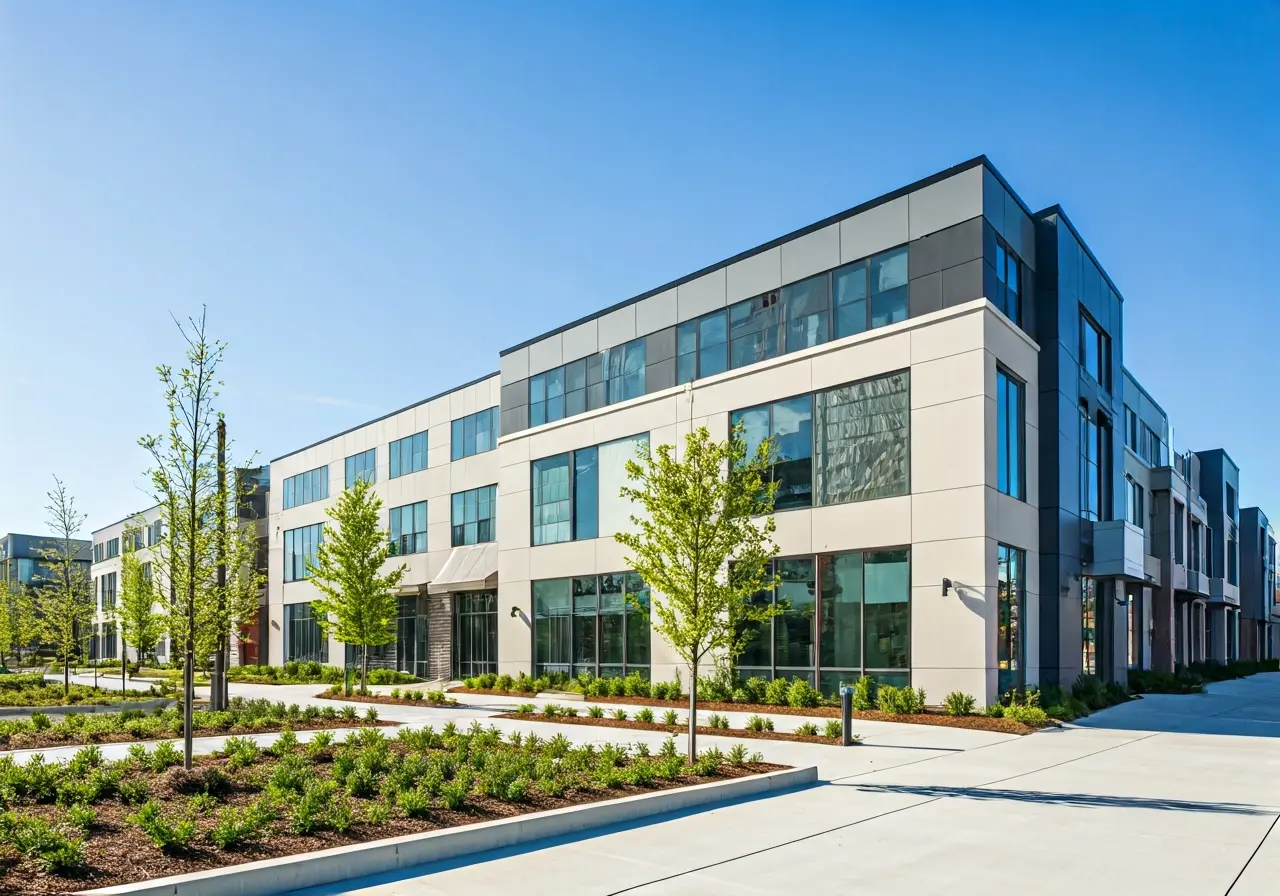Nearly 120 million individuals in the United States work for small businesses, accounting for over half of the country’s population. Industry professionals claim that in order to remain competitive in the search for efficient office space, commercial real estate companies must work with architects to implement open office space designs and modify their real estate marketing strategies to meet small business needs. Below we dive into why these claims are debatable, outlining the pros and cons of open office space design.
The International Facility Management Association reported that 68% of North American employees already work in an office with an open floor plan or open seating. While in some cases this design trend has proven successful, others found it to be downright disasterous.
Pros
1. Cost efficient: According to a General Services Administration report, AT&T implemented the open office plan saving $3,000 on the cost per office and a total of $550 million per year. Another company that greatly benefited from this floorplan change was Nortel’s Telecommuting Program. The company saved $20 million a year in costs.
2. Increased Property value: Updating a building’s design not only increases the property value but also puts your building on the radar as a “hotspot” to rent. By doing so, you not only distinguish your commercial building as a place to be but it serves as an additional strategic real estate leasing marketing tool.
3. Enhanced office flow: Studies found the flow of the open office has allowed for staff to maintain morale and encourage teamwork. It also creates a sense of equality among all of the employees. The open office layout breaks down the barriers between communication among colleagues and allows creativity to flow. One could easily argue this free flow of ideas and feedback significantly increases innovative design solutions to many problems.
“Open office spaces encourage people from different backgrounds to interact with each other—the accountant with the creative guy or the C-suite executives with the janitors—thereby producing more creative output,” says Raj Raghunathan, a professor at the The University of Texas McCombs School of Business, who specializes in the study of happiness. “Open space connects people with diverse experiences to exchange notes on what is going on in their life and offers new perspectives.”
Cons
1. Health hazards: A study examining short and long-term illness by Stockholm University found a ‘significant excess risk’ of short-term illnesses in open office spaces. These were especially greater among women. In terms of long-term illnesses, environmental stresses, ‘irrelevant sound’, lack of visual privacy and a reduced ability to control one’s own personal space showed greater risk for long-term infections.
“In a study by Cornell University psychologists, Gary Evans and Dana Johnson, clerical workers who were exposed to open office noise for three hours had increased levels of epinephrine—a hormone that we often call adrenaline, associated with the so-called fight-or-flight response. Evans and Johnson also discovered that people in noisy environments made fewer ergonomic adjustments than they would in private, causing increased physical strain. The subjects subsequently attempted to solve fewer puzzles than they had after working in a quiet environment; in other words, they became less motivated and less creative.”
2. Unnecessary Noise: Another major complaint with open office space is the distraction of noise. Studies have shown that open office spaces tend to be too loud for employees to fully attend to a project. Noise can be managed through soundproofing with white noise and noise-proof materials. However, a major down side to soundproofing can be the exorbitant cost.
Although the open office space debate continues, some companies are using the feedback to create the optimal working space. One of these fortune 500 companies is Google. Christopher Colement, Google’s director of global design stated,
“We found that employees need a lot of diversity. There are so many ways to work—as a team, solo—and there are so many kinds of workers, from introverts to extroverts and so on. We create many different places so people can be as productive as possible—from formal and informal conference rooms to open spaces to stretching and yoga areas and gyms.”
A 2005 report by the UK Commission for Architecture & the Built Environment found that a well-designed, employee-friendly office environment can boost productivity by as much as a 25%. Planning spaces for employees based on their needs can create a highly functional and enjoyable office for everyone.
Our Atlanta commercial real estate marketing agency fills spaces for real estate clients, both directly and indirectly. From high-rise Class A buildings to mid-rise Class B properties as well as mixed-use developments, warehouses and medical offices, infinitee is your national real estate marketing expert.Learn more about the author here.

.jpg)
